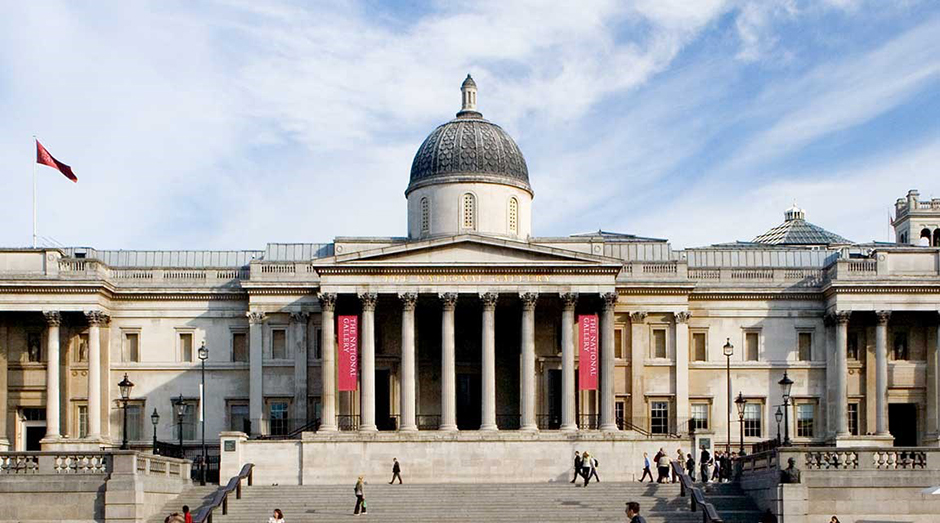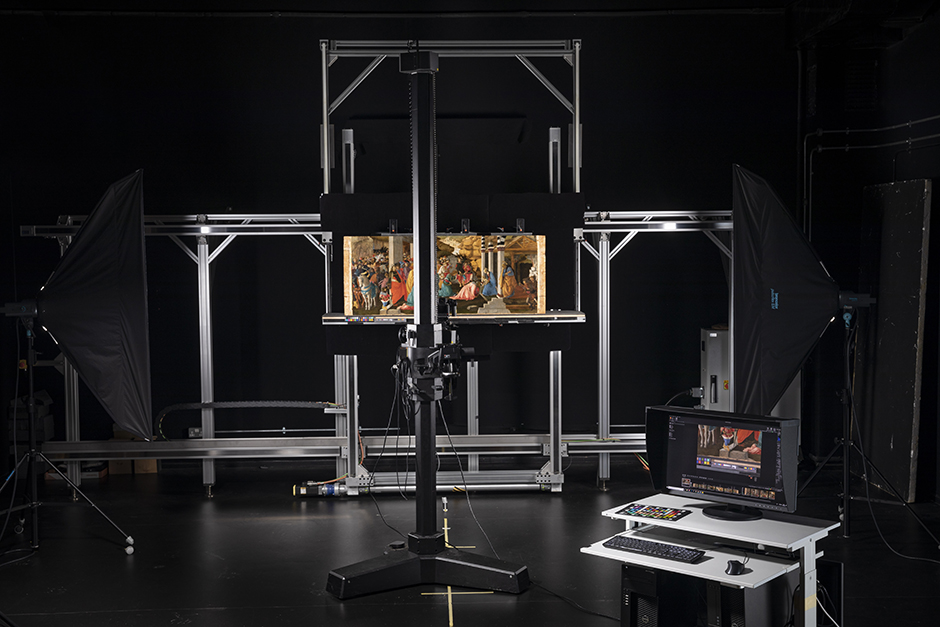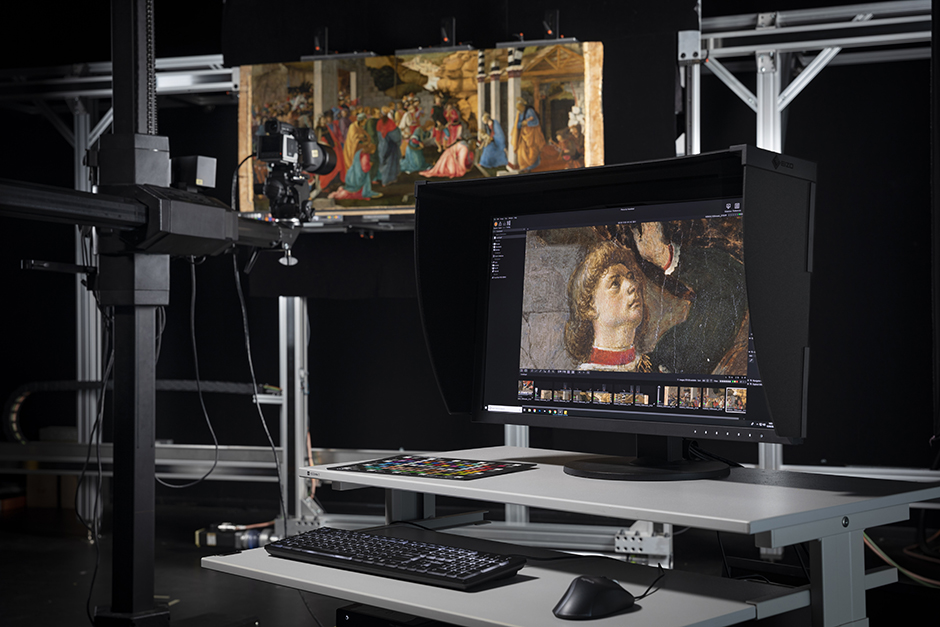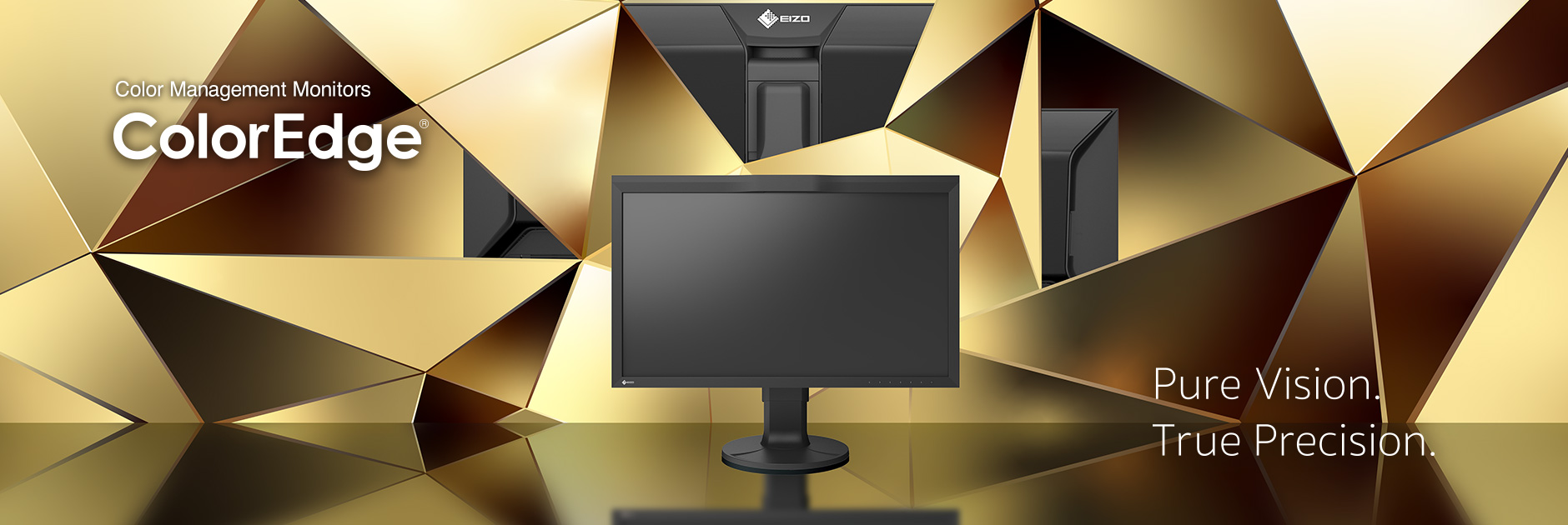Creative Work
National Gallery - Creating Precise Images of Some of the Greatest Works of Art Ever Made
The National Gallery holds one of the greatest collections of paintings in the world, telling the story of European art with works dating from 1250 to 1900. The National Gallery collection was founded in 1824 when the small but prized collection of banker John Julius Angerstein came onto the market and was bought by the Government for the people of Britain. The National Gallery occupies the northern side of the iconic Trafalgar Square with a footprint of 46,396 square meters, is free for all to enter and continues to expand both its facilities and collection. We spoke to Andrew Bruce from the Photography and Imaging Department to understand how important photography is to the Gallery, and how they recently incorporated EIZO ColorEdge into its workflow.

Tell us about the National Gallery.
The National Gallery Photographic Department was founded in 1919 in order to produce prints of the paintings to sell to the public, however the photographers were soon called upon to document the paintings when they were cleaned. Today we still document the paintings before, during and after conservation treatment. The importance of good high-quality photography of the collection was underlined recently during the Covid-19 pandemic, when the gallery was closed for the longest time in its history. For 111 days the gallery was closed and the only way to enjoy or study the collection was through the photographs we produce.
As well as documenting the collection and the gallery itself the photographers also perform a range of imaging techniques that help us and our colleagues better understand the paintings and investigate how they were made, how they have been treated and consider how best to care for them. We carry out X-radiography, UV-visible luminescence imaging, raking light capture and photogrammetry. Paintings are typically captured at high resolution with a sampling frequency of 600 pixels per inch. Such high-resolution capture is made possible by individually photographing small sections of the painting and then digitally stitching these multiple image files together. Paintings are mounted on a robotic easel which moves the painting in front of the camera and a special camera is used to take four successive photographs, moving the sensor slightly between each exposure. The resulting photographs are higher resolution and capture color better that cameras which take one single exposure. For large paintings several hundred photographs might be captured and then stitched into one huge super-detailed composite image file.
What were your requirements?
To achieve the most accurate, uniform and repeatable photographs the paintings are illuminated with very high-quality xenon flash lights. A color profile is applied to the photographs that is specific to the lens, light source and sensor used resulting in images with an incredible level of detail, color and tonal precision. The photographs generally have a sampling efficiency of 99% and an average dE2000 of under 2, meaning that they are rich in detail and that the camera does a very good job of accurately capturing the colors in the paintings. Much of the work done today involves “photography by numbers” whereby the accuracy of a photograph is judged by comparing the measurements of various charts and targets with the measurements recorded in the photographs. This process is important as it removes much of the subjectivity involved when photographing a painting. It is essential to avoid photographers making personal decisions about how a painting looks and so altering the way they photograph the painting. For example, one photographer will look at a painting and might think it is brighter, more colorful or bluer than another photographer thinks it is, which is just what we want to avoid. Computer software performs a much more precise job of matching colors than any human can!

Human eyes are especially poor at comparing an image of a painting on a monitor with the actual painting, even in controlled lighting conditions. We rarely compare the image on screen to the painting in front of us, instead what we need our monitor to do is provide us with the most detailed and true representation of the image we have captured. The computer monitor is often a photographers first reference point when it comes to noticing whether there may be an issue with a photograph taken that needs to be further investigated.
What are the benefits of the EIZO solution?
The National Gallery Photography and Imaging Department began using the EIZO ColorEdge CG279X monitors in December 2019 and so far, we’ve been really happy with them. We chose the CG279X as the 27” screen is large enough to display all of the panels of the various computer applications we use and still show a very good-sized preview of the photograph we’ve just taken. We really appreciate the 3D LUT in the CG279X. This shows a more precise representation of the tonality of the images we’re looking at, and a difference that’s noticeably better than the previous high gamut monitors we were using with just a standard LUT. Working on modern PCs with quality graphics cards means we’ve also been able to access 10-bit per channel color that is, in turn, processed by the CG279X’s 16-bit LUT and produces the smoothest gradation of tones that we’ve ever seen on a monitor. The accuracy of the tonality, from the darkest to brightest tones, is particularly important for us and our monitors typically have a dE2000 of under 0.6. The large gamut of the CG279X means it can display all of the colors in the archival color space that we store our photographs in and the preset monitor profiles allows us to quickly view an image in the smaller sRGB color space, allowing us to preview how the image would look on a more typical monitor or device display.
Lastly, the CG279X provides us with peace of mind, knowing it calibrates itself regularly with its built-in sensor. We have set the monitors to calibrate themselves weekly in the early hours of the morning. This has the dual benefit of being out of working hours, so we don’t lose any working time and also takes place at night when the lights are off and the sky dark, so no ambient light can interfere and reduce the quality of the calibration process.
When creating such precise images of some of the greatest works of art ever made, we need to work with a similarly precise monitor. No matter the imaging technique the EIZO CG279X has helped us to boost productivity and precision through its automated calibration and the exactitude with which it allows us to examine our images.

Deployed Product
ColorEdge CG279X


